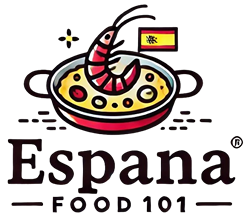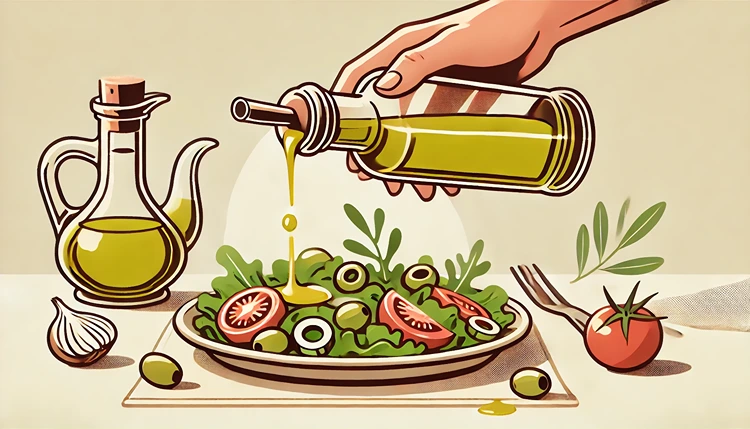Olive oil isn’t just another ingredient in Spanish cuisine; it’s a cultural treasure. Spain is the world’s largest producer of olive oil, and it plays a vital role in defining the flavors and textures of traditional Spanish dishes. From simple tostada con tomate to the luxurious finish on grilled seafood, olive oil is central to the country’s culinary identity. So, understanding how olive oil is processed and used in Spanish cooking can deepen your appreciation of this essential product.
How Is Olive Oil Processed? The Journey From Tree to Table
Before olive oil makes its way into your kitchen, it undergoes a fascinating transformation. Spain’s diverse geography and climate create perfect conditions for olive cultivation. But what happens after the olives are harvested? The processing steps can have a huge impact on the flavor and quality of the oil.
Harvesting: The First Step to Great Olive Oil
The journey starts in the olive groves, where workers handpick the olives or use mechanical shakers. Timing is everything; olives harvested too early can result in a bitter oil, while late harvesting risks losing flavor. In Spain, the harvest typically occurs between November and February, when the olives are perfectly ripe.
Helpful Hint:
The earlier the olives are harvested, the more robust and peppery the oil will taste. If you prefer milder flavors, opt for oils made from later-harvested olives.
Pressing: Extracting the Liquid Gold
After harvesting, the olives are cleaned to remove leaves and debris before they’re crushed into a paste. This is where the magic happens. Traditionally, the paste was pressed between mats to extract the oil, but modern methods use centrifugal force to separate the oil from water and solid matter. The first pressing yields extra virgin olive oil, the highest quality, packed with antioxidants and flavor.
Stats:
Spain produces around 50% of the world’s olive oil supply, with over 2.5 million tons of olive oil produced annually. This makes Spain the largest olive oil producer globally.
Refinement: Creating Different Grades of Olive Oil
Not all olive oil is created equal. After the initial extraction, some oils undergo further refinement. This involves filtering out impurities or even chemically processing the oil. While refined olive oil lacks the flavor complexity of extra virgin, it’s often used for cooking at higher temperatures due to its higher smoke point.
What Are the Different Types of Olive Oil Used in Spain?
Now that you know how olive oil is processed, it’s time to dive into the different varieties you might encounter in Spanish cooking. Each type serves a specific purpose in the kitchen, and understanding these can elevate your cooking.
Extra Virgin Olive Oil: The Gold Standard
Extra virgin olive oil (EVOO) is the highest quality, made from the first pressing without chemical processing. It’s rich in flavor and perfect for drizzling over salads, grilled vegetables, or even as a dip for fresh bread. The Spaniards use it in cold dishes like gazpacho or simply to enhance the taste of fresh tomatoes.
- Flavor Profile: Fruity, peppery, with a slight bitterness.
- Common Uses: Salads, raw dips, dressings, finishing oil.
Virgin Olive Oil: A Milder Option
Virgin olive oil is also made from the first pressing but may have a slightly higher acidity level, which gives it a milder flavor compared to EVOO. It’s often used for sautéing or frying, as it still retains a good amount of flavor without overpowering dishes.
Refined Olive Oil: Best for Cooking at High Temperatures
When cooking at high temperatures, such as deep-frying, refined olive oil is often the go-to in Spain. It has a higher smoke point, meaning it won’t burn as easily as its more delicate counterparts, making it ideal for crispy fried foods like churros or patatas bravas.
How Is Olive Oil Used in Popular Spanish Dishes?
Olive oil is incredibly versatile in Spanish cooking, used for everything from frying to marinating. Let’s look at some iconic dishes where olive oil truly shines.
Paella: The Iconic Rice Dish
No conversation about Spanish cuisine is complete without mentioning paella. Olive oil is one of the foundational ingredients, used to sauté the sofrito—onions, garlic, tomatoes, and peppers—that gives the dish its rich base. Without olive oil, paella just wouldn’t be the same.
Gazpacho: A Refreshing Summer Soup
This chilled soup from Andalusia relies heavily on high-quality olive oil for its smooth texture and rich flavor. Made with tomatoes, cucumbers, garlic, and a generous pour of EVOO, gazpacho is a perfect example of how olive oil elevates even the simplest ingredients.
Tortilla Española: The Spanish Omelette
Tortilla Española, or Spanish omelette, is a simple dish of potatoes, eggs, and onions, but olive oil is what makes it truly special. The potatoes are gently fried in olive oil until soft, giving the dish a rich, savory taste that’s hard to beat.
Helpful Hint:
When frying potatoes for a tortilla, use a mild olive oil to avoid overwhelming the dish with a peppery flavor.
Comparison of Olive Oil Types in Spanish Cooking
| Type of Olive Oil | Flavor Profile | Best Uses | Smoke Point |
|---|---|---|---|
| Extra Virgin Olive Oil | Fruity, Peppery, Bitter | Drizzling, Salad Dressings, Dips | 375°F (190°C) |
| Virgin Olive Oil | Mildly Fruity, Lightly Bitter | Sautéing, Low-Heat Cooking | 410°F (210°C) |
| Refined Olive Oil | Neutral, Milder Taste | Frying, High-Heat Cooking | 465°F (240°C) |
| Unfiltered Olive Oil | Robust, Cloudy, Rich | Cold Dishes, Finishing Touch | 350°F (180°C) |
Can Olive Oil Be Used for Frying?
There’s a common misconception that olive oil isn’t suitable for frying because of its low smoke point. However, this largely depends on the type of olive oil used. Refined olive oil, with a higher smoke point, is actually ideal for frying many traditional Spanish dishes.
Frying with Refined Olive Oil
In Spain, refined olive oil is often used for deep-frying crispy foods like calamari or churros. Its higher smoke point makes it perfect for achieving that golden, crunchy exterior without burning.
Sautéing with Extra Virgin Olive Oil
Extra virgin olive oil is best for sautéing at medium to low temperatures. Whether you’re preparing a sofrito or grilling vegetables, the rich flavor of EVOO adds depth to your dishes. Just be mindful of the heat, as EVOO has a lower smoke point than refined olive oil.
What Are the Health Benefits of Olive Oil?
Aside from its culinary versatility, olive oil is widely recognized for its numerous health benefits. In Spain, where olive oil is a dietary staple, its positive effects on health are well documented. Here are some key health benefits that come with regular consumption of high-quality olive oil, especially extra virgin varieties.
Heart Health: Protecting Your Cardiovascular System
Olive oil is rich in monounsaturated fats, particularly oleic acid, which has been shown to reduce inflammation and lower the risk of heart disease. These healthy fats help regulate cholesterol levels by increasing good cholesterol (HDL) and reducing bad cholesterol (LDL). The Mediterranean diet, which relies heavily on olive oil, is often praised for its heart-protective properties.
Stats:
Studies have shown that people who consume a Mediterranean diet, rich in olive oil, have a 30% lower risk of heart disease compared to those who follow a typical low-fat diet.
Rich in Antioxidants
Extra virgin olive oil is packed with powerful antioxidants, including vitamin E and polyphenols, which combat oxidative stress in the body. These antioxidants are crucial in preventing cellular damage and slowing the aging process. In fact, polyphenols in olive oil are linked to lower risks of chronic diseases, including cancer.
Olive Oil for Brain Health
Olive oil’s anti-inflammatory properties don’t just benefit your heart—they also support brain health. Research suggests that consuming olive oil regularly can help prevent cognitive decline and reduce the risk of diseases like Alzheimer’s. The anti-inflammatory compounds in olive oil protect brain cells and promote better memory and cognitive function.
Managing Weight with Olive Oil
While olive oil is calorie-dense, its healthy fats are more satisfying than other types of fats. This makes it easier to control appetite and manage weight. In fact, studies suggest that incorporating olive oil into your diet can lead to better long-term weight management compared to low-fat diets that often leave you feeling deprived.
Helpful Hint:
Use olive oil as a replacement for butter or margarine in your cooking. Not only is it healthier, but its rich flavor also elevates even the simplest dishes.
How to Choose the Best Olive Oil for Your Kitchen
Not all olive oils are created equal, and selecting the best one for your kitchen can make a big difference in both flavor and health benefits. Here are some tips for choosing the highest quality olive oil.
Look for “Extra Virgin” on the Label
Always aim for extra virgin olive oil (EVOO) when possible. This designation means the oil has been cold-pressed, without chemical processing, and retains the highest level of nutrients and antioxidants. EVOO is packed with flavor, making it ideal for drizzling on salads, bread, and other dishes where you want the olive oil to stand out.
Check the Harvest Date
Freshness is crucial when it comes to olive oil. Check the label for a harvest date or “best by” date to ensure you’re getting a bottle that hasn’t been sitting on the shelf for too long. Olive oil is best when consumed within a year of harvest, as its flavor and nutrients diminish over time.
Opt for Dark Bottles
Olive oil is sensitive to light, which can cause it to spoil more quickly. That’s why the best oils come in dark glass bottles that protect them from sunlight. Store your olive oil in a cool, dark place to preserve its freshness and flavor for longer.
Can Olive Oil Go Bad?
Like any fresh product, olive oil has a shelf life. While it doesn’t spoil in the same way as milk or meat, it can go rancid, resulting in a bitter taste and loss of nutrients. Most olive oils are good for up to two years, but extra virgin varieties should be consumed within a year of being opened for the best flavor and health benefits.
Signs of Rancid Olive Oil
If your olive oil smells or tastes like crayons, putty, or has a musty aroma, it’s likely gone rancid. In this case, it’s best to discard the oil and replace it with a fresh bottle.
FAQs
Wrapping Up
Olive oil plays an integral role in Spanish cooking, offering both rich flavor and numerous health benefits. From its processing methods to its diverse uses in iconic dishes like paella and gazpacho, olive oil truly enhances the culinary experience. Whether you’re drizzling extra virgin olive oil over a fresh salad or frying up traditional Spanish favorites, this ingredient brings depth and authenticity to your meals. Choosing high-quality olive oil, storing it correctly, and understanding how to use different varieties can elevate your cooking to new heights. So, next time you reach for your bottle of olive oil, remember the journey it took from the olive groves of Spain to your kitchen. It’s not just a cooking staple; it’s a cornerstone of Spanish culinary tradition.







